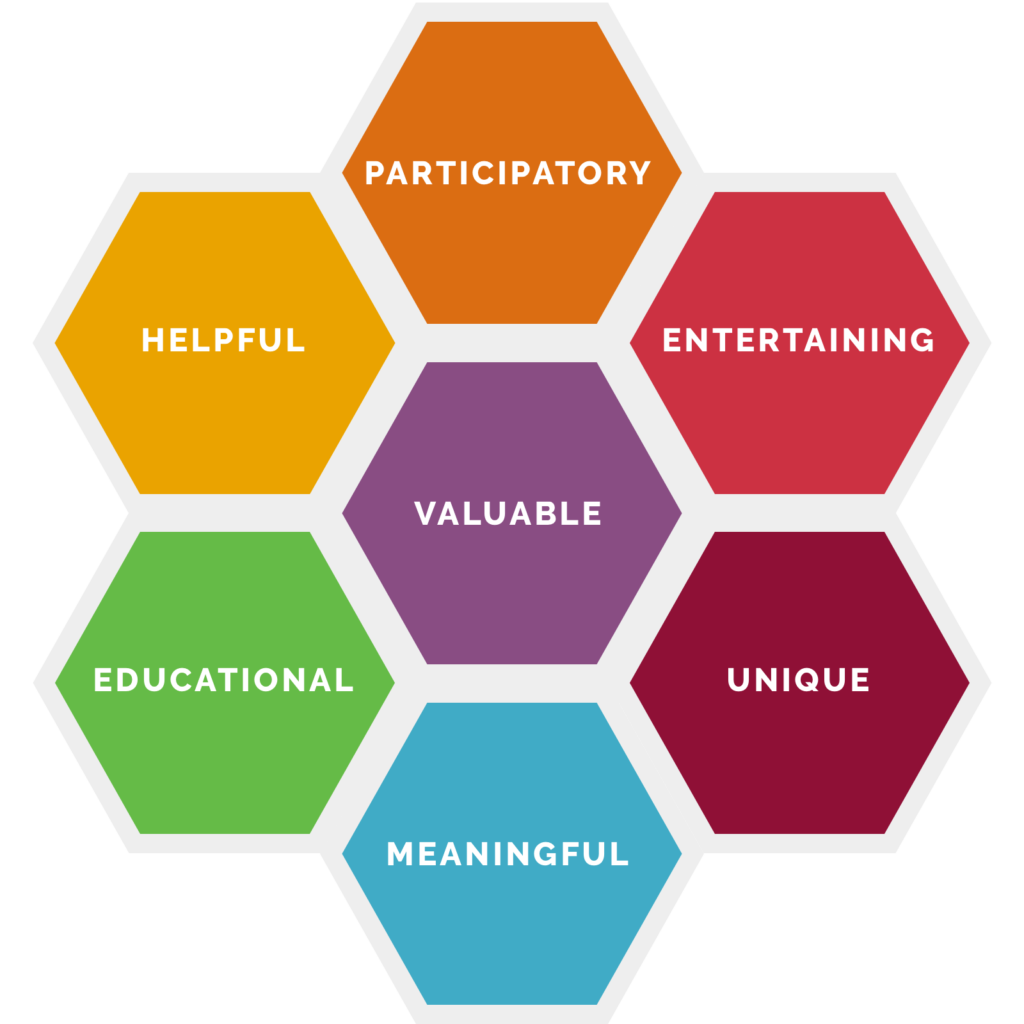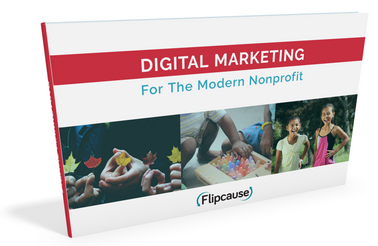Content Marketing 101: Blogging
Content is a broad term for text, images, videos, and infographics that tell your story. It is valuable for many reasons:
- It's shareable: This is the stuff your supporters will use to spread the word. When something goes 'viral' online, that's because it's valuable content that people want to share. Your supporters will not magically do the work for you. You have to create some messaging and content for them to share.
- It's flexible: Content can be reused across all of your sharing platforms. It can be cut up, edited, and recycled to fit the specific campaign or platform you're using.
- It's powerful: Content is how you create your organization's voice and brand. Through content, you can be a reliable, recognizable resource for people wanting to learn about your cause.
How do you create content that others will find compelling? For all content creation – whether it's blogging, email marketing, or advertising – you'll want to use the Honeycomb of Value as a guide. Any time you're creating something you want people to read or look at, make sure it meets at least two of these qualities!

Content as a marketing tactic refers to creating and using content strategically to reach your objective. Email marketing, Search Engine Optimization, and social media marketing are forms of content marketing, and we'll focus on each of those separately.
For this section, we're going to focus on your blog.
to blog or not to blog?
Like any other marketing tactic, it depends on what you're trying to do.
It used to be that organizations and individuals would maintain a blog as an engagement tool. People could sign up to 'follow' your blog and would read it regularly. While there are still many blogs out there with loyal followings, you don't need to have a following to benefit from blogging. These days, companies create blogs for an array of reasons:
- To attract people to their website
- To provide valuable information
- To establish themselves as leaders in their industry
- To rise in the ranks of search engines (more information about this will be posted in the next section).
- To serve as a home base for content you create, which can then be repurposed across other channels such as email and social media, linking people back to your website
In short, blogs can have a huge impact on how people find your website, learn more about you, and decide that you're trustworthy. There's a reason so many organizations have a blog – when done well, they provide incredibly high return-on-investment.
That said, they're not a solution for everyone. Before you decide to launch a blog, consider your capacity to consistently publish high-quality content. Also, consider whether you can provide value to your donor persona. If you’re not providing value to your prospective and current supporters (answering their questions, addressing their ideas), no one will read what you're writing.
Getting Started With Blogging
If you know you have quality content you can produce, but are unsure of where you'll find the time to write and maintain a blog, here are a few ideas:
- Ask staff members to contribute. Having perspectives from across your agency gives your supporters an in-depth look. If you can, find a small handful of people who are strong writers and are willing to contribute on a regular basis.
- Reuse content you've created for other purposes, including brochures and your website. You'll want to expand on it, but you won't have to start from scratch.
- Prioritize quality over quantity. Although it's great to publish often, do what you can with what you have without sacrificing quality.
Make sure to come up with a good system for editing your posts. Besides a good ol' fashioned read-through by multiple people, try using the Hemingway App and Grammarly.
Ideas for Blog Content:
- Tie donor actions to numbers
- Tell and share personal stories
- Provide research and information on your field of expertise
- Thank constituents
- Share recent photos and videos
- Repurpose evergreen content
- In addition to (or instead of) creating an FAQ page for your website, create blog posts that answer some of the most common questions you receive.
- Create a post that explains terms used in your field
- Develop a post that lists other resources, bloggers or experts.
Make a plan with a Content Calendar
The key to success is quality content that is published regularly. For this, you’ll need to organize and plan in advance. (If you don’t plan it, it won’t get done!)
- Gather your crew of core contributors for a launch meeting.
- Brainstorm a list of topics to write about. Among the group, choose the best ideas and assign them among your writers.
- Now that you have your topics, writers, and frequency – put it in a content calendar that’s shared among your team.
A good content calendar includes publishing dates and topics, as well as who is assigned. This way, everyone can stay on the same page and collaborate.
Click here for a free content calendar template.
Although you'll have a structured plan, keep space open for last-minute posts that reflect current events. For example, if you're a homelessness advocacy organization, you might publish about a special election proposition that affects your target population and why voters should vote a certain way.
Download our free eBook to learn more about Digital Marketing for Nonprofits






Scam Help
June 5, 2022Wise tips to follow and I appreciate your hard work in content marketing! Just a quick note to tell you that I have a passion for the topic at hand. I am going to bookmark the site for further assistance. Please keep posting things like this.
Amith raj
July 16, 2022Hey, nice article about “content marketing”. I will definitely follow this for my company to give the best possible services to my customers. Keep on adding this type of valuable content again and again. Hope to read more from you. Thank you!